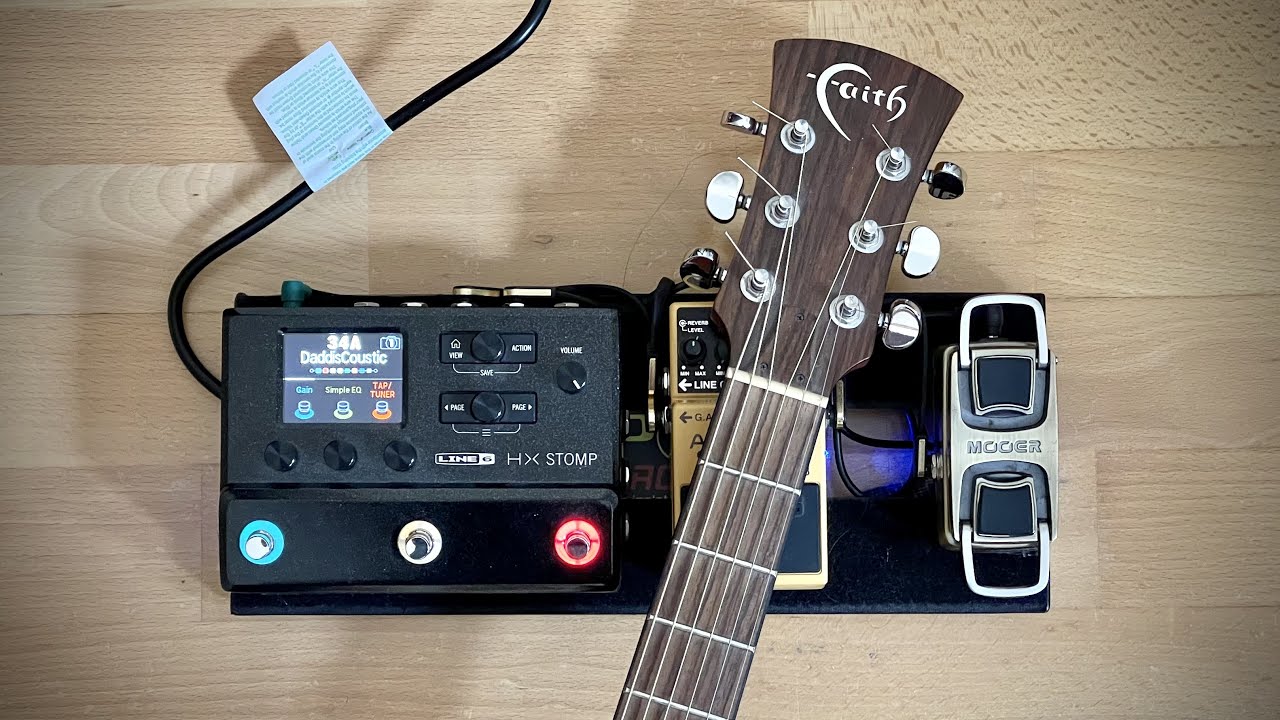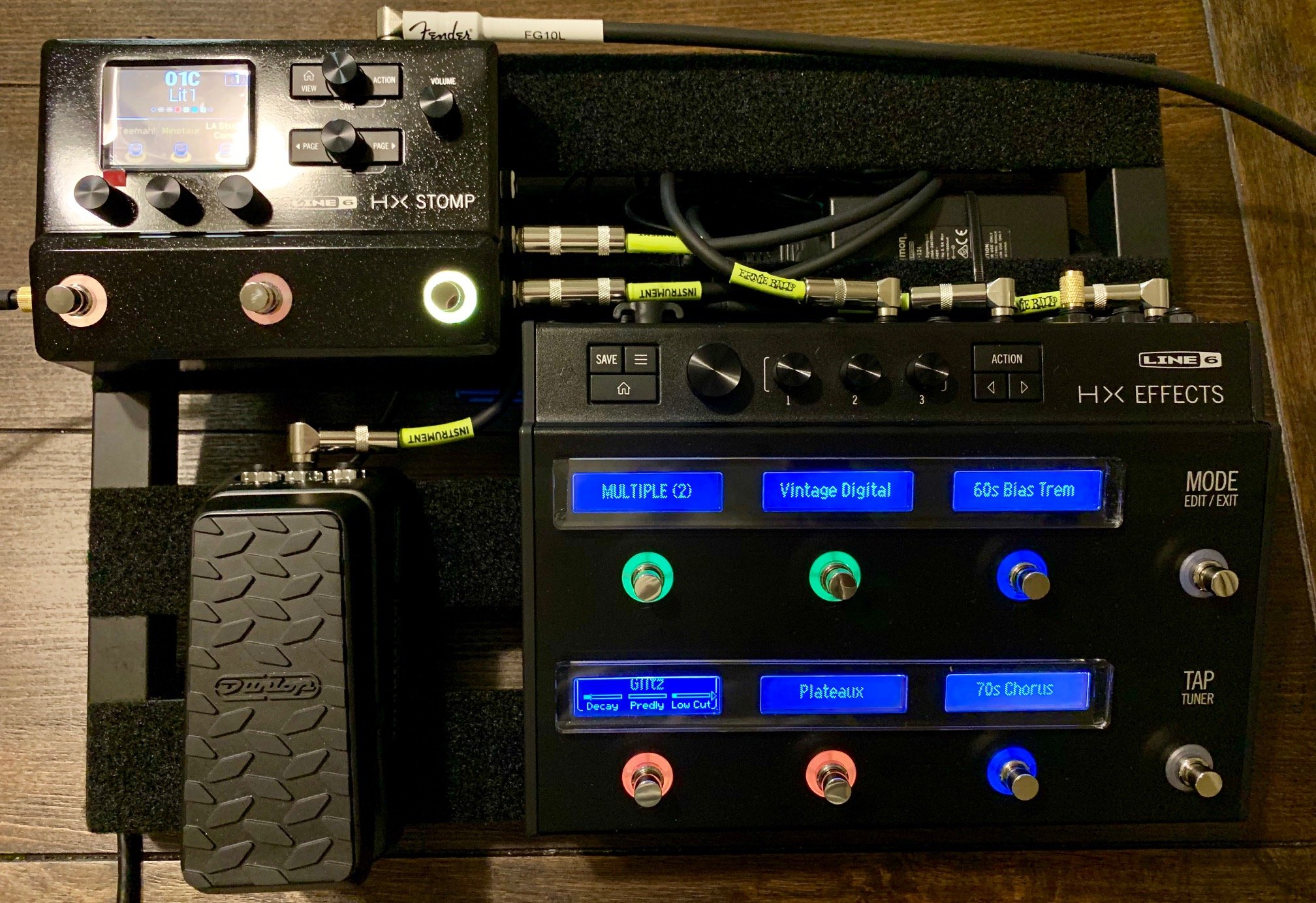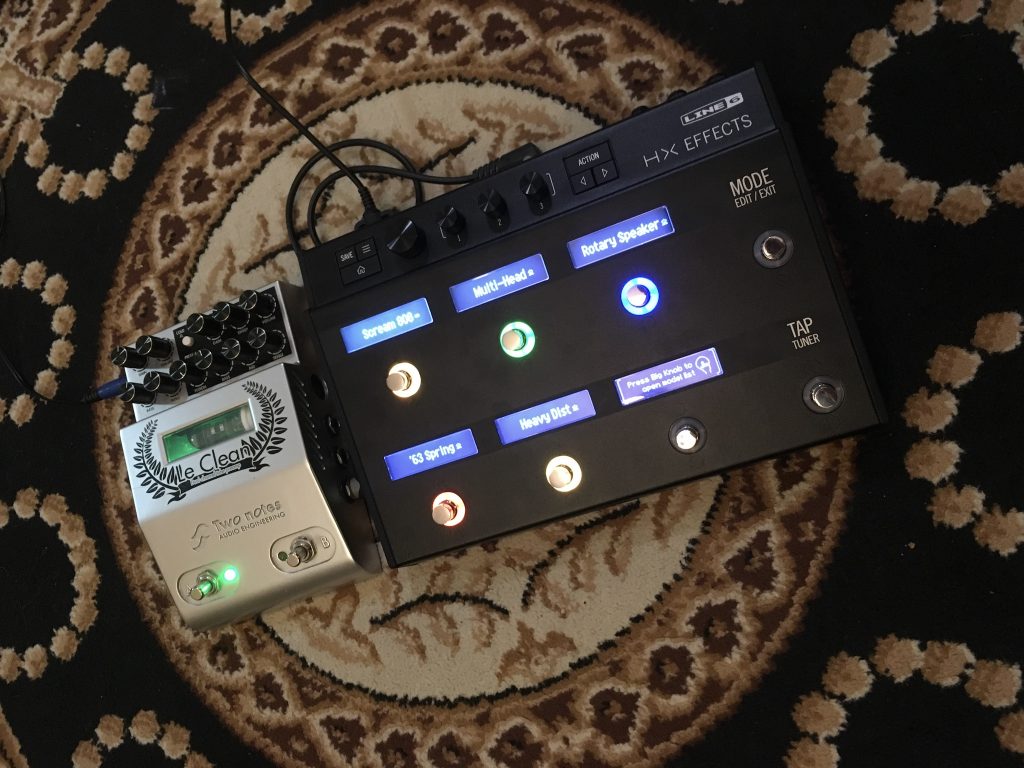Contents
As they belong to the Helix flagship series, HX Effects and HX Stomp naturally take the spotlight in various articles analyzing Line 6 multi-effect processors. The popularity of the two models also means the topic of HX Effects vs. HX Stomp catches the interest of multiple guitarists around the globe. In the case that you like both processors and struggle to settle for one, my article can help you out. Take a look at the following information to find the ultimate multi-effect processor for your setup.
Specifications And Features
|
HX Effects |
HX Stomp |
|
| Size (L x W x H) |
7.8 x 10.8 x 2.8 inches |
5.0 x 7.0 x 2.6 inches |
| Weight |
4.9 pounds |
1.7 pounds |
| Type | Multi-effects |
Multi-effects and amp modeling |
| Amp modeling |
N/A |
80+ amps and 40+ cabinets |
| Presets |
128 |
126 |
| Number of effects |
200+ |
200+ |
| Inputs |
2 x ¼ inch (L/Mono, R) and 2 x ¼ inch TRS (stereo return) |
2 x ¼ inch (L/Mono, R) and 2 x ¼ inch (L/R, aux in) |
| Outputs |
2 x ¼ inch (L/Mono, R) and 2 x ¼ inch TRS (stereo send) |
2 x ¼ inch (L/Mono, R) and 2 x ¼ inch TRS (stereo send) |
| MIDI |
In, Out/Thru + USB |
In, Out/Thru + USB |
| Price |
$649.99 |
$699.99 |
HX Effects Vs. HX Stomp: Outlines
Portability
It’s easy to see that HX Effects is bigger than HX Stomp (7.8 x 10.8 x 2.8 inches vs. 5.0 x 7.0 x 2.6 inches). Aside from that, between the two models, HX Effects is also the heavier one (4.9 pounds vs. 1.7 pounds). However, the Line 6 processors feature excellent portability by all accounts and you should be able to move them around at your leisure. The lightweight and compact body of HX Stomp may come in handy on a number of occasions though.
Performance
In terms of presets, HX Effects holds an edge over HX Stomp (128 vs. 126) but the difference is insignificant. Additionally, both models offer more than 200 effects in use so as effect pedals, they have nearly the same performance. Still, there is one thing that sets HX Effects and HX Stomp apart: amp modeling. While amp modeling is absent on HX Effects, HX Stomp sports a library consisting of well over 80 amps and 40 cabinets.
You need a multi-effect processor that gives you a lot of effects and presets while also supporting amp modeling? Then it’s strongly recommended that you go for HX Stomp.
Compatibility
Designed for modern standards, HX Effects and HX Stomp can work alongside a wide range of instruments, accessories, etc. Noteworthily, the Line processors of Line 6 share identical outputs (2 x ¼ inch (L/Mono, R) and 2 x ¼ inch TRS (stereo send)). Both models have similar inputs too (2 x ¼ inch (L/Mono, R) and 2 x ¼ inch TRS (stereo return) vs. 2 x ¼ inch (L/Mono, R) and 2 x ¼ inch (L/R, aux in)). Last but not least, HX Effects and HX Stomp resemble each other in terms of MIDI (In, Out/Thru + USB).
All in all, the Line 6 multi-effect processors will give you little trouble as you adapt them to your setup.
Price
Once it comes to price, you must keep in mind the rule: “You get what you pay for”. Between HX Effects and HX Stomp, HX Stomp is the more expensive one and the values it offers match its price. If you have a fat wallet and want a tip-top processor, it’s strongly recommended that you pick up HX Stomp. In the case that you like HX Stomp but have no need for amp modeling, you should opt for HX Effects and save a couple of bucks.
Verdict
To put it plainly, HX Effects and HX Stomp both prove to be capable multi-effect processors that can satisfy the needs and requirements of guitarists. However, there is no need to strain your budget to buy HX Stomp unless amp modeling is one the key criteria to you. For most of the time, the performance of HX Effects is more than sufficient for regular uses and it costs less than HX Stomp. Think about what you want from your processor and you will be able to make a wise investment.
How To Use Processors: Recommendations
- Don’t trust level meters completely: By keeping an eye on input meters, you should have an easy time avoiding input overload but output is another story. Even if the original signal stays below the input headroom, there is still a chance that it may exceed the headroom elsewhere. Hence, while it’s a good idea to check out level meters, don’t give them too much credit. If you notice distortion splattering, proceed to reduce the input level no matter what level meters say.
- Pay attention to stereo outputs: Several processors can create stereo with time delay effects by moving processed signals in different states to different channels. That being said, if the outputs collapse into each other, all you hear will be dry sound. For good measure, you should pay attention to stereo outputs and don’t hesitate to experiment. Here is a quick test: set the volume of channel one and two at normal and all the way down levels respectively then increase the volume level of channel two.

Hi music fan! I am Jeff. Hope that you enjoy some stuff I shared here in my personal blog.
About myself, Currently I am in charging as Artist Manager/Music Supervisor at 72 Music Management. I did managed album to Grammy Award in 2017 with 7 Nominations from 2014-2020 and had the opportunities to work with : A.J. Croce, Blind Boys of Alabama, Bobby Rush, Dom Flemons, Dustbowl Revival, Sarah Grace
Governor of the Memphis Chapter of The Recording Academy is one of a award that I am lucky to achieved.


